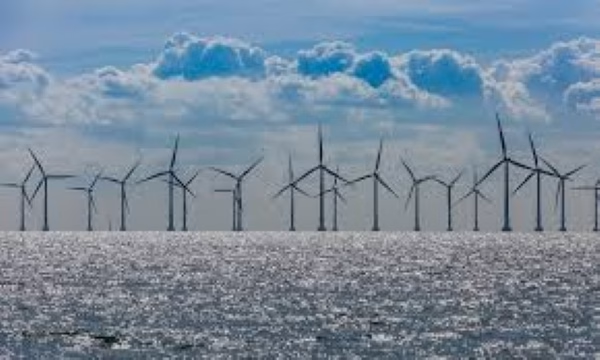The Dogger Bank wind farm, located around 165 kilometers off the coast of Yorkshire, in the North Sea ranks as the largest offshore wind farm in the world. The wind farm is being developed in three phases (A&B, C, and Sophia) by four global leaders in renewables construction. Equinor, RWE, Startkraft, and SSE saw to the first energy production from the site on October 10, 2023.
The Dogger Bank A and B expects full completion this year. This comes after farm A reported turbine failure during its commissioning late last year. Dogger Bank C debuts its turbine installation phase this year ahead of full project completion in 2026.
Also as part of the Dogger Bank farms are Sophia that began construction in 2023 and will be completed next year with the others, and the Dogger Bank South spearheaded by RWE. Another potentinal wind farm still in planning is the Dogger Bank D with a 1.3 GW capacity potential. It was green-hydrogen inclusive earlier on but the plan was dropped in March 2024. The proposed project also received its seabed lease order in August 2025.
Once fully completed by next year, the Dogger Wind Farm by its multiple owners will supply a total capacity of 3.6 GW and power over 5 million homes.
Scope of the Dogger Wind Farm
Siemens and Haliade-X turbines will be used in the farms. Some of these have a height of up to 280 meters with blades stretching up to 107 meters in length. Such dimensions ensure optimal design for the deployment of wind power across the North Sea towards meeting the future energy demand. Siemens is also developing the 2,900 MW Hornsea wind farm in the North Sea that expects completion by 2027.
The Dogger Wind Farm is worth a lot to the UK’s green economy. The cost of construction for the wind farm is approximately £9 billion ($12. 2 billion USD). As an investment, the returns ought to be comparable.

This advancement is not only environmentally friendly but also strategic economic-wise. The project also caters for thousands of employment opportunities in manufacturing, installation, and maintenance sectors. This also invariably promotes the growth of local economies in the region.
Environmental Impact
The Dogger Bank wind farms significantly contribute towards the combat of climate change. Able to produce close to 4 GW of green energy, it cancels out the production of millions of tons of carbon dioxide annually.
It also complements the government’s objective of net-zero emissions by 2050.
At that scale, offshore wind energy is not only visible in the UK but also internationally. Accomplishments from the Dogger Bank also places the country in a right strategic position to lead in renewable energy innovations and expansion around the globe.
Additionally, partnerships of global renewable companies in schemes such as this not only signals economic advantages but also climate, technological, and policy advantages.
Outlook on the World’s Largest Offshore Wind Project
The Dogger Bank Wind Farm is a clear indicator of the UK’s resolve to embrace renewable energy technology. As one of the largest offshore wind projects by size and technological advance, this offshore wind project illustrates the impacts of green energy on socio-fiscal development devoid of pollutive consequences.
As the global sphere shifts its focus to embrace cleaner energy sources, the Dogger Bank Wind Farm is an excellent example of the way to go in renewable energy transition.
